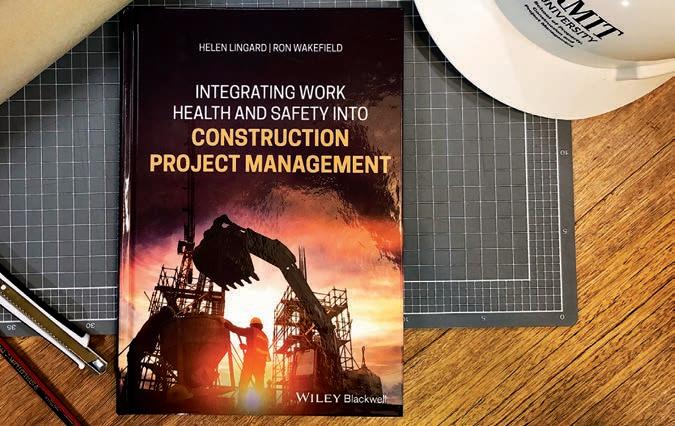
2 minute read
Safety in construction book review We review the newly released book on how to integrate work health and safety into construction project management
INTEGRATING WORK HEALTH AND SAFETY A new book covers the safety challenges presented by the large pipeline of infrastructure construction work being planned.
THE SAFE USE OF CRANES IN THE
construction industry is influenced by many ‘upstream’ factors including the procurement, design, planning and coordination of work. A new book by Helen Lingard and Ron Wakefield of RMIT University’s Construction Work Health and Safety research group compiles research work undertaken over a 12-year period and includes case studies drawn from RMIT’s work with partners in industry and government.
Several of the chapters draw on research funded by the Victorian Government Major Transport Infrastructure Authority relating to: • clients’ use of commercial frameworks to drive work health and safety excellence, • the role of supervisors in ensuring workers’ health and safety, • the prevention of musculoskeletal disorders, and • the use of lead and lag metrics to track and understand project work health and safety performance.
Other case studies on health and wellbeing are drawn from work with major construction contractors in the Queensland construction industry and industrial construction projects in New Zealand.
The book contains important lessons for clients, design professionals, project managers and others about how to embed work health and safety in management activities across the
entire project life cycle.
Integrating work health and safety.
Lessons can be learned from the research relating to clients’ consideration and incorporation of work health and safety requirements in project procurement and management processes. The book also incorporates a detailed analysis of factors impacting ‘safety in design’ and provides recommendations for how best to eliminate or reduce work health and safety risks at the design stage of construction projects. An organisational culture maturity continuum, developed on behalf of the Australian Constructors Association, is also presented in the book. This continuum can be used to understand the extent to which organisational or project cultures are likely to enable or impede work health and safety performance.
Topics included in the book are tied together by the theme of integration. The over-arching message is that work health and safety considerations need to be better integrated into construction project management practices across all stages. Work health and safety can be improved when meaningful input into decision-making is sought from all stakeholders, including subcontractors, industry bodies and associations, unions and workers.
The large pipeline of infrastructure construction work being planned also presents challenges in terms of workforce capability and performance. Further, time and resourcing pressures in projectbased construction work drive long often unsociable hours of work that can impact workers’ health, safety and wellbeing.
The mental health of construction workers is of particular concern and the industry has an alarmingly high rate of suicide. This is sometimes attributed to unsupportive work and organisational cultures, as well as the presence of psychosocial health hazards in the workplace.
In this context, an integrated approach to protecting workers’ health and safety is very important.
The book, titled “Integrating Work Health and Safety into Construction Project Management” was published by John Wiley and Sons. More information can be found at: https://www.wiley.com/ en-us/Integrating+Work+Health+and+Safety+into+Construction+Project+Management-p-9781119159926










